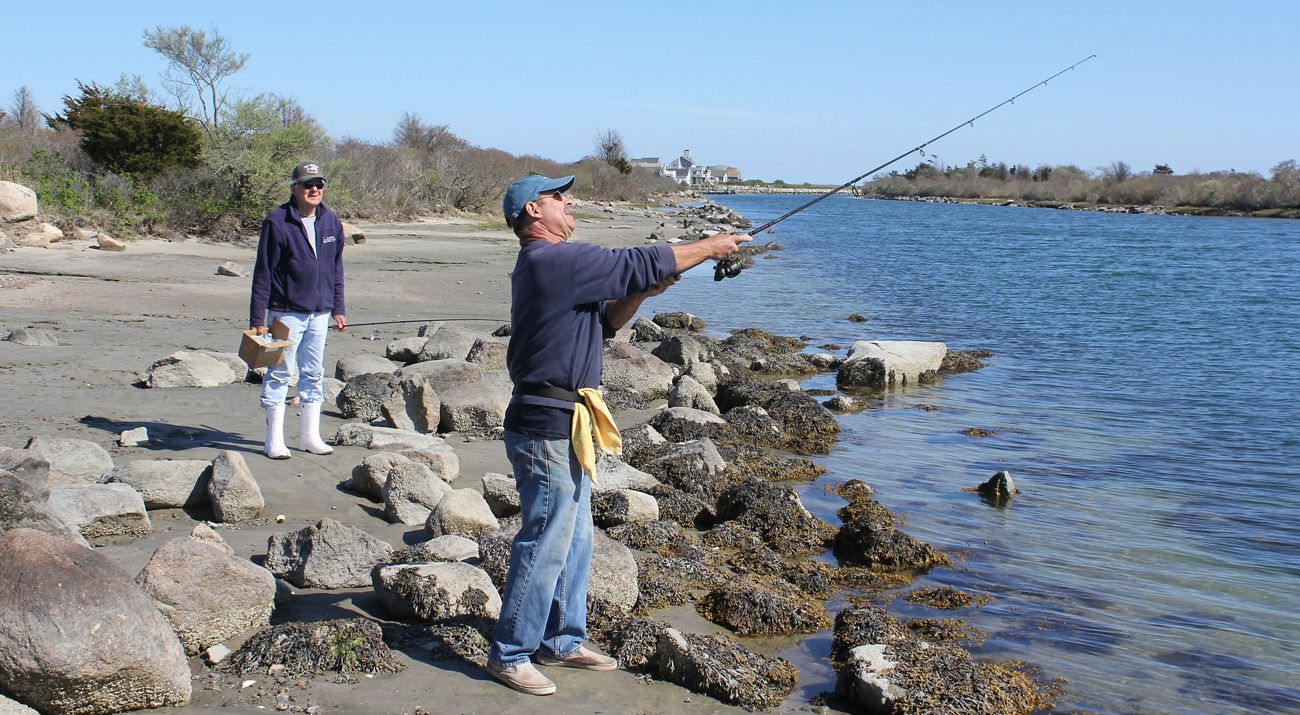Growing Oysters & Tautog, Too?
The Conservancy collects oyster shells from raw bars and puts them back in the water to help young sportfish survive.
Quote: Scott Comings
Complex structures like oyster reefs are critically important for juvenile fish, providing excellent feeding areas and protecting them from open-water predators.
Juvenile fish are at a very critical life stage. To survive, they require feeding areas that also provide protection from predators. Oyster reefs, salt marshes, and sea grasses are all essential to the survival of young black sea bass, tautog, scup, and flounder.
Over the years, however, South County’s salt ponds have lost much of their best fish habitat to dredging, hardening of shorelines, nutrient pollution, and harvesting. In particular, oyster reefs have declined by more than 95% from their historic highs in Rhode Island waters.
Together with our partners, The Nature Conservancy is working on a solution. This spring, we teamed up with RI DEM to construct nine small-scale, experimental reefs in Quonochontaug Pond, using 130 tons of recycled clam and oyster shells. Coupled with a similar effort in Ninigret Pond in 2015, the goal is to improve the survival rate of young sportfish in areas where fish production appears to be limited by suitable habitat.
Oysters are ideal for this project, and not only because they pair nicely with hot sauce at the raw bar! They are known as “ecosystem engineers,” filtering the water and sequestering carbon, on top of providing forage areas for fish and refuge from predation.
One major issue we face is that often the reefs are not self-sustaining. There are a variety of factors at play, but the bottom line is that once the seeded oysters die off, they no longer provide those additional services. To address this problem, the Conservancy is working with Drs. Jon Grabowski and Randall Hughes of Northeastern University to evaluate whether oysters native to Green Hill Pond or the Narrow River estuary perform better than a hatchery strain commonly used in restoration projects. Essentially, we’re hoping to identify a new “restoration line” of oysters that is self-sustaining and, therefore, ideal for future restoration.
The practice of building reefs to enhance fish habitat has only recently been introduced in southern New England. The work in Ninigret and Quonochontaug Ponds will inform future reef construction projects and contribute to a broader finfish restoration strategy for Rhode Island.
The Nature Conservancy and RI DEM pooled their resources to fund this project, with support from the U.S. Fish and Wildlife Service’s Sport Fish Restoration Program and many individual donors.
